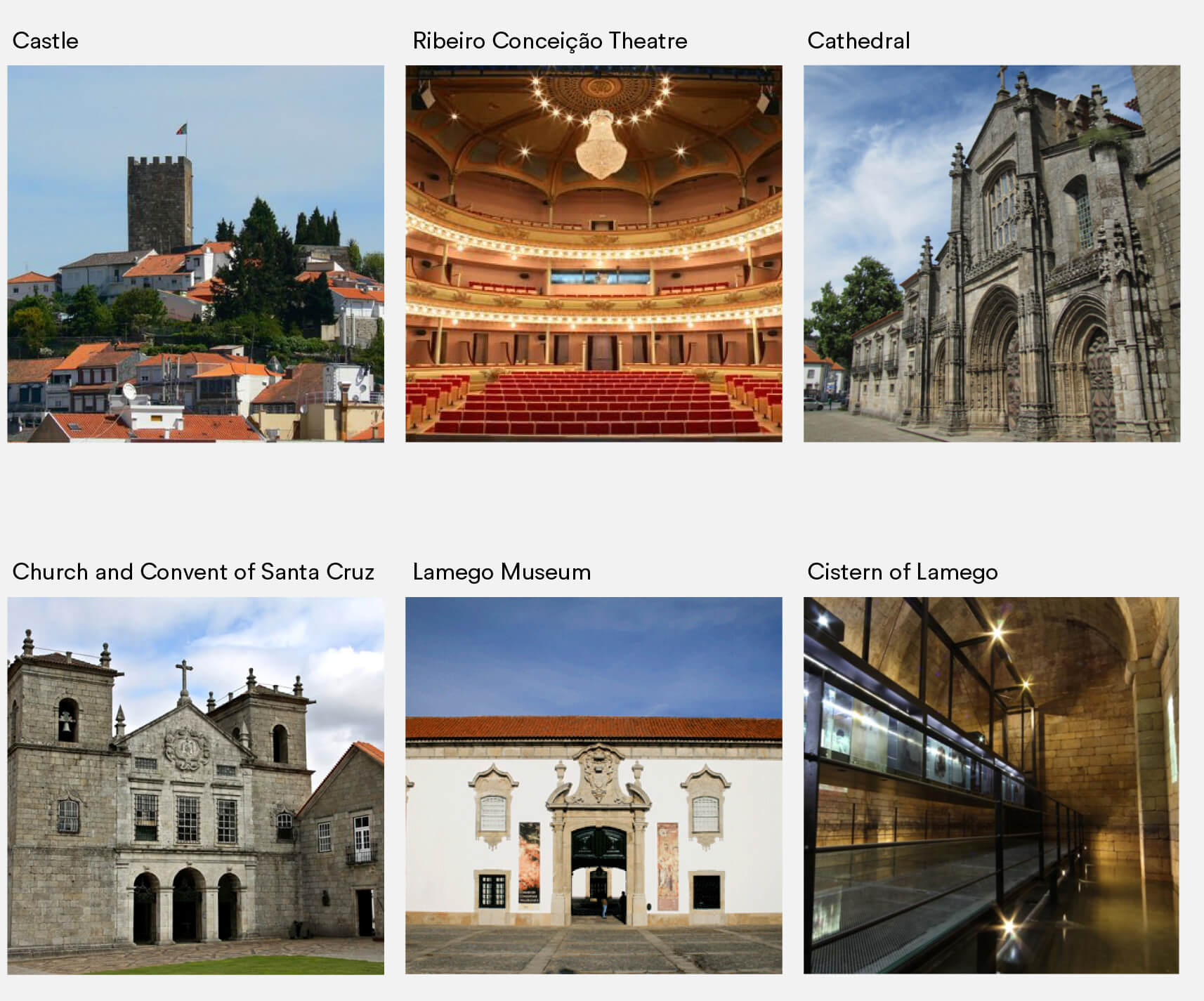The city of LAMEGO
Historical Heritage and Local Cuisine
Places worth visiting:
Castle of Lamego
Cathedral
Chapel of S. Pedro de Balsemãol
Chapel of Nossa Senhora da Esperança
Chapel of Nossa Senhora dos Meninos do Bairro da Ponte
Chapel of the Espírito Santo (Holy Ghost)
Church and Convent of Santa Cruz
Church of Graça
Church of S. Francisco
Church of Santa Maria Almacave
Church of the Convent of Santo António de Ferreirim
Church of the Desterro
Church of the Monastery of the Chagas
Cistern of Lamego
Lamego Museum
Ribeiro Conceição Theatre
Sanctuary of Nossa Senhora dos Remédios
